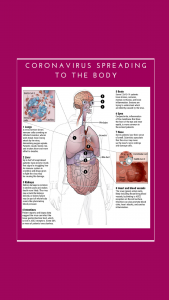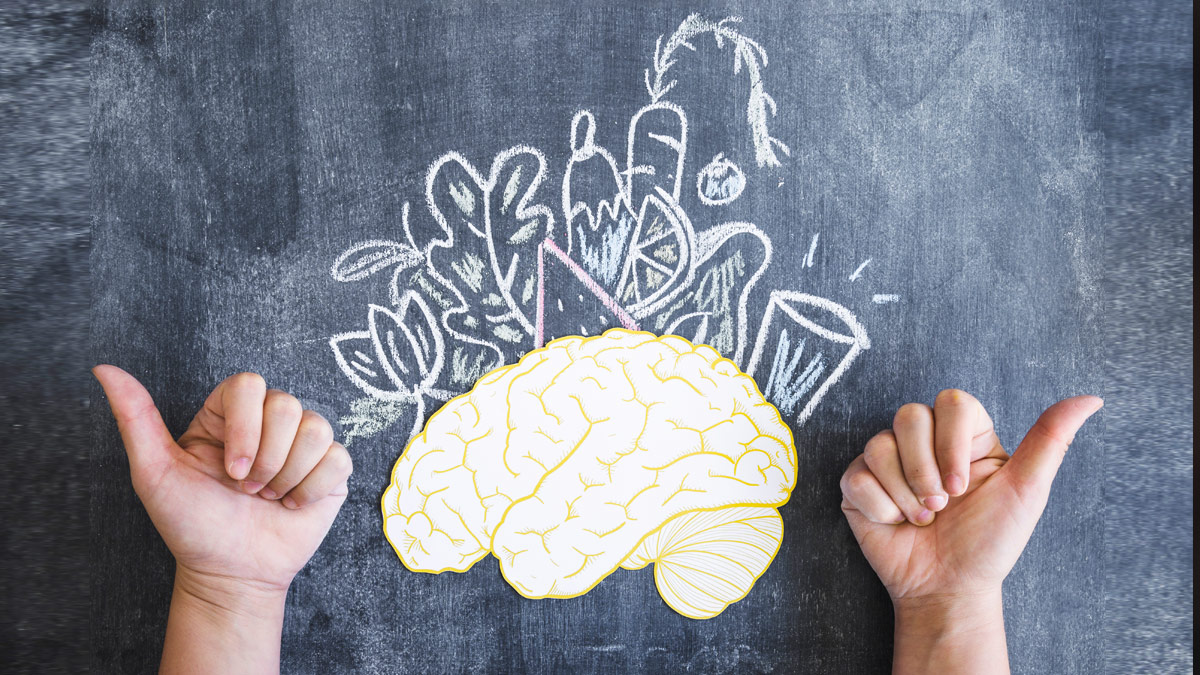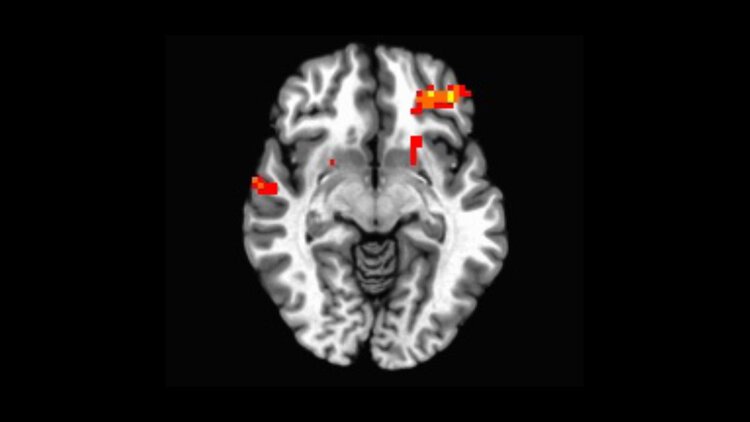With the coronavirus has taken over the world causing mass lockdowns and completely uprooting our way of life, many of us know someone close to us who has been infected with the virus.
Even with over 2 million cases globally, doctors and scientists are still tracking the path that the coronavirus takes down the human body. Typically, the coronavirus is inhaled by an individual, and the virus looks for cells abundant in a receptor by the name of angiotensin-converting enzyme 2 (ACE2).

Coronavirus requires this receptor to enter the cell, so cells full of ACE2 are the most vulnerable. In this stage, there may be no symptoms, or there may be symptoms that resemble those from the cold / cough.
Once inside these cells, the coronavirus multiplies, and after the first week, if the coronavirus is not yet defeated, it travels down from the mouth and nose and goes to the lungs. Because the alveoli in the lungs are rich with ACE2 receptors, and oxygen crosses the alveoli to reach the rest of the body, if the coronavirus reaches this stage, the effects may be deadly. The immune system gets involved, but this prevents oxygen from being transported to the body. Like in pneumonia, this leaves behind coughing and rapid and shallow respiration. However, if the alveoli become stuffed with fluid, white blood cells, and mucus, individuals may struggle to get enough oxygen, and they might die.
The lungs are the first stage, and now researchers are learning the path that the virus takes, and it is capable of reaching the heart, kidneys, gut, and brain through our blood vessels. When the coronavirus reaches these organs, it has, commonly, resembled a number of other diseases including heart attacks, strokes, seizures, and diarrhea. The brains of about 10% of patients with COVID-19 are impacted in some way, and 20% have diarrhea. Each of these diseases adds to the difficulty in tackling the coronavirus, and hopefully, the issue will be resolved soon.

While common symptoms of the virus affecting the lungs and breathing and causing fever and shortness of breath, research shows that many of the symptoms of the virus are shown to be harmful to the brain. In fact, based on the research thus far, researchers believe that there are 4 effects that the virus has on neurological behavior.
Firstly, the virus may have the capacity to enter the brain and cause a severe infection. In fact, several patients have been observed with the viral genetic material in the Cerebrospinal fluid (CSF) and even in the brain.

Potentially, the virus could enter through the nasal cavity and latch onto the olfactory bulb thus causing the effects of limiting smell while entering into the brain.

Besides infection, the virus also causes the immune system to become hyperactive. The microglia, or the immune cells of the nervous system are thus also activated and they may attack the neural cells of the brain causing cognitive issues. 
Retinal microglia (green), the resident immune cell of the central nervous system, and the retinal
vasculature (magenta), in a retinal flat mount. Credit: Connor Laboratory – Dong Ho Park, M.D.
Thirdly, as the body tries to mount a powerful response against the virus, it causes the body to undergo many physiological changes and is thus very chaotic. This leads to fevers and potential organ failures, thus leading to patients hallucinating or causing them to be delirious.
Finally, there is the risk of having blood clotting abnormalities due to an excess of blood clotting in patients who are infected. Clots can form in the brain, causing a stroke since blood flow to neural tissue is blocked.

An Ischemic Stroke occurs when a clot or mass clogs a blodd vessel cutting off the blood flow to brain cells.
Now because of the blood clotting, some of the COVID patients in their 30s and 40s are suffering from strokes, an anomaly as strokes are normally limited to older individuals.
This makes the neural effects of the coronavirus even more dangerous. Researchers all throughout the world are continuing to study the direct correlations between COVID-19 and its effects on our body and the brain, and as we learn more about its devastating effects, it becomes even more important that we wear a mask and social distance. Stay safe everyone!

“Symptoms of a Stroke.” Amy Speech & Language Therapy, Inc., www.amyspeechlanguagetherapy.com/symptoms-of-a-stroke.html.
staff, Science X. “Microglia, Immune Cells of the Central Nervous System, Shown to Regulate Neuroinflammation.” Medical Xpress – Medical Research Advances and Health News, Medical Xpress, 22 Apr. 2019, medicalxpress.com/news/2019-04-microglia-immune-cells-central-nervous.html.
“Cerebrospinal Fluid (CSF) Testing.” Lab Tests Online, labtestsonline.org/tests/cerebrospinal-fluid-csf-testing.
Meredith Wadman, Jennifer Couzin-Frankel. “How Does Coronavirus Kill? Clinicians Trace a Ferocious Rampage through the Body, from Brain to Toes.” Science, 28 May 2020, www.sciencemag.org/news/2020/04/how-does-coronavirus-kill-clinicians-trace-ferocious-rampage-through-body-brain-toes.





